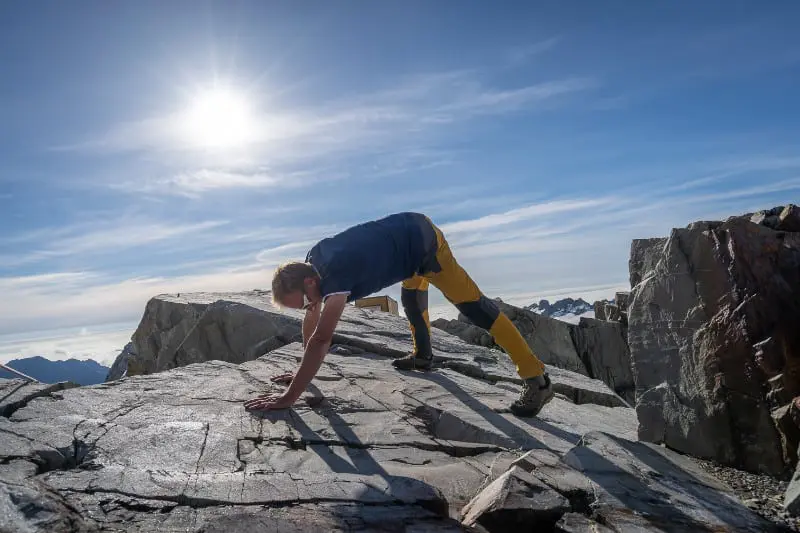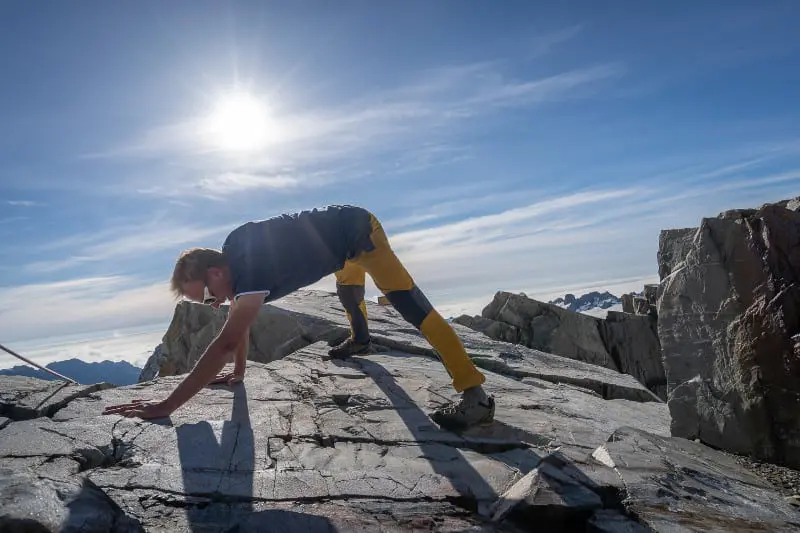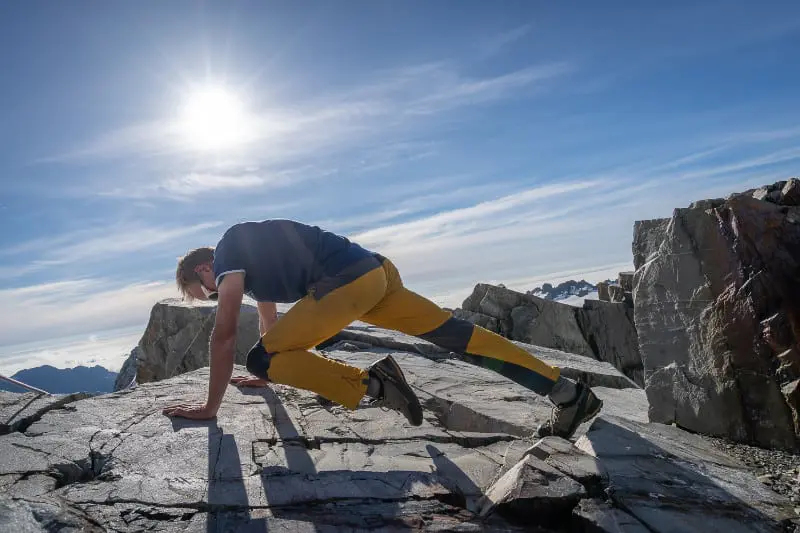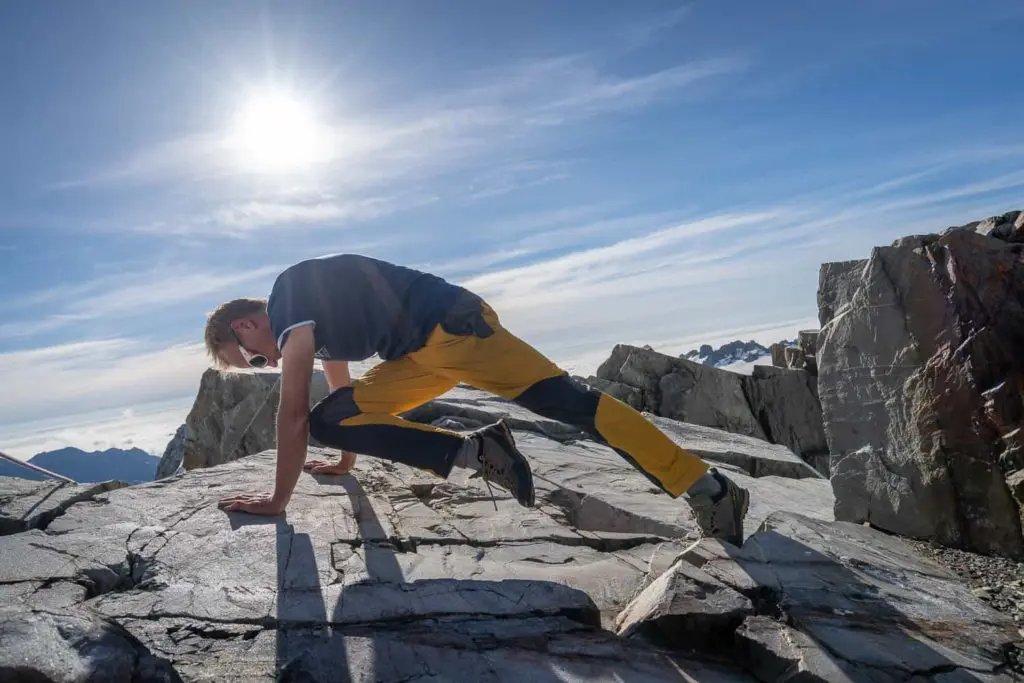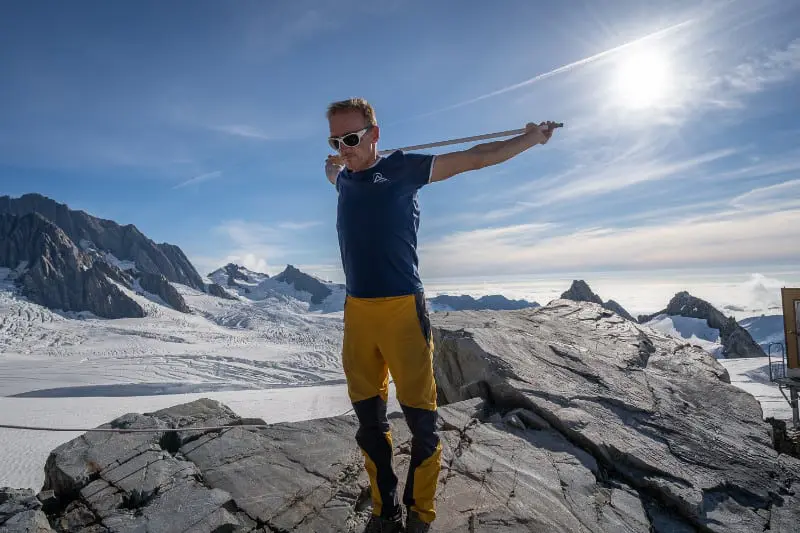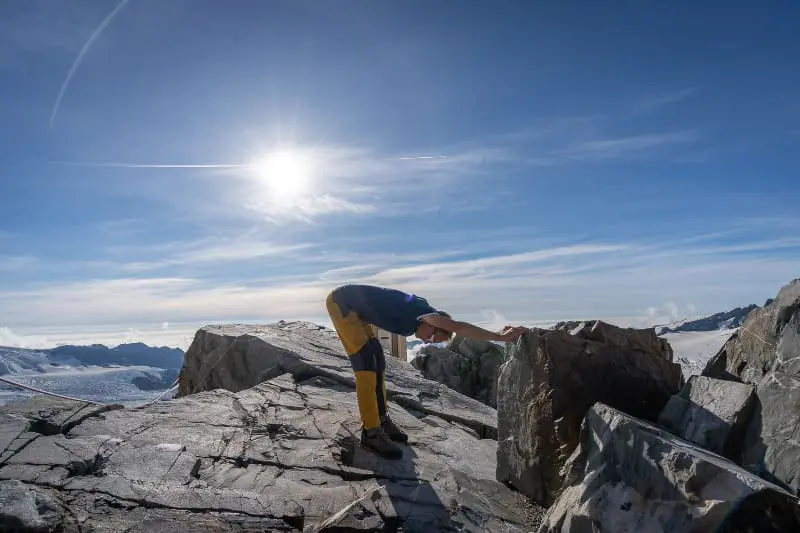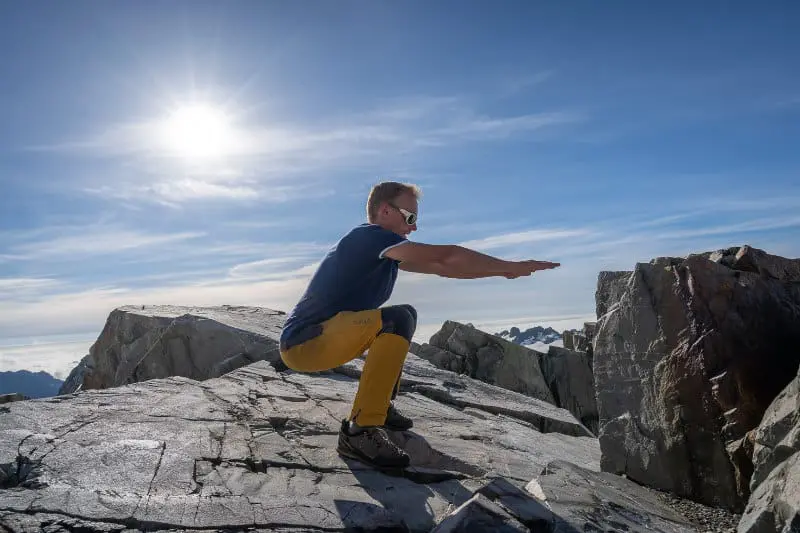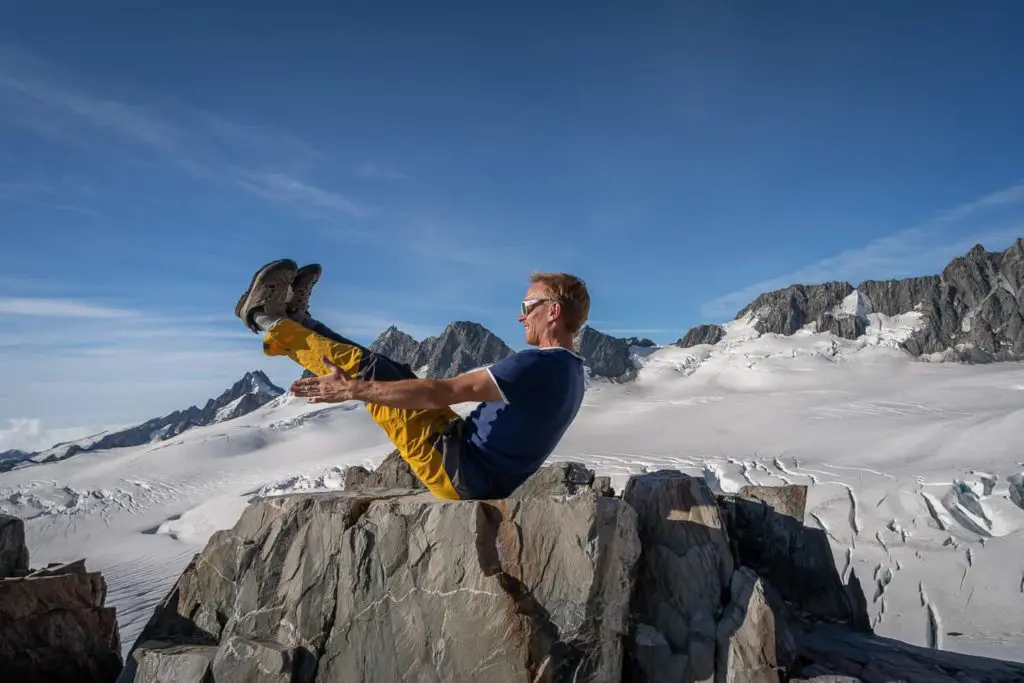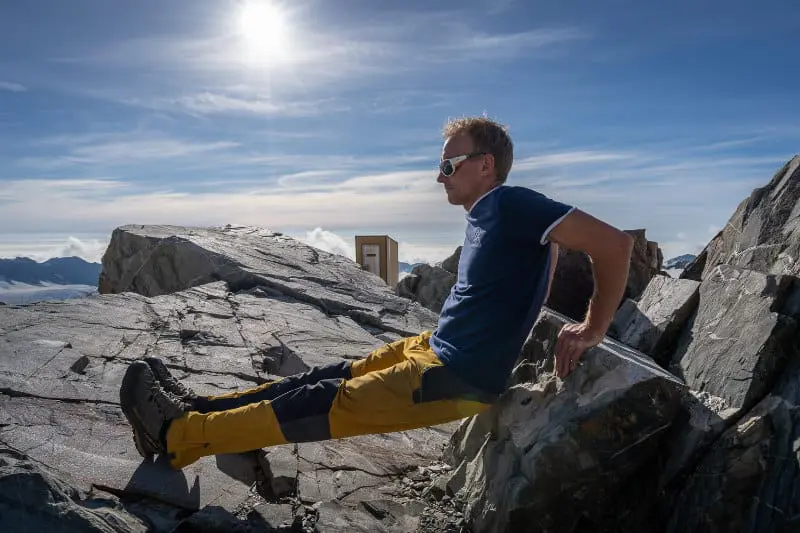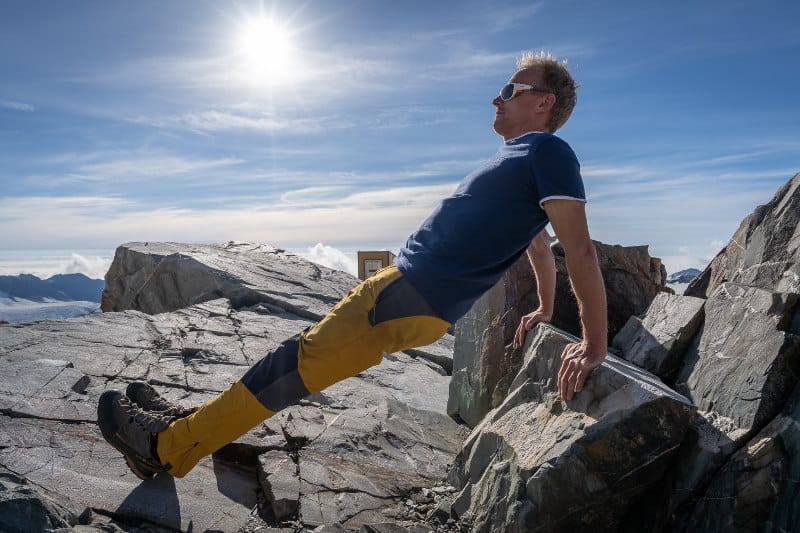Climbers no longer get up, grab some hot booze, and head up as they used to. Perhaps for the majority of climbers and mountaineers, it was never the case. However, core workouts were unknown back then. Extending? That was reserved for practitioners of yoga. Moveable? You were good as long as you could carry your backpack.
That is no longer the case. And with good cause. People are now more aware of the possible risks associated with repeatedly performing the same exercises, the benefits of resting and recuperating, and the idea that a strong core is essential to a lifetime of injury-free climbing.
Here’s what we know. “Cold” muscles and joints need some stimulation before they are ready for intense activity. Core exercises not only activate the muscles that support your body, but they also increase blood circulation to the parts that will propel your body up the hill. Bodies with high mobility are less likely to get hurt, regardless of what ’70s climbers might think.
Tips for making the most of these exercises:
Breathe during the exercises. Don’t stop breathing. This helps your body learn to train and breathe at the same time, and it also helps clean the lungs and eliminate toxins. Relax. These exercises are not supposed to stress you out or leave you with stiffer muscles than before. Controlled tension is the key to power. Letting your body relax at the right moment is vital.
The Lunge
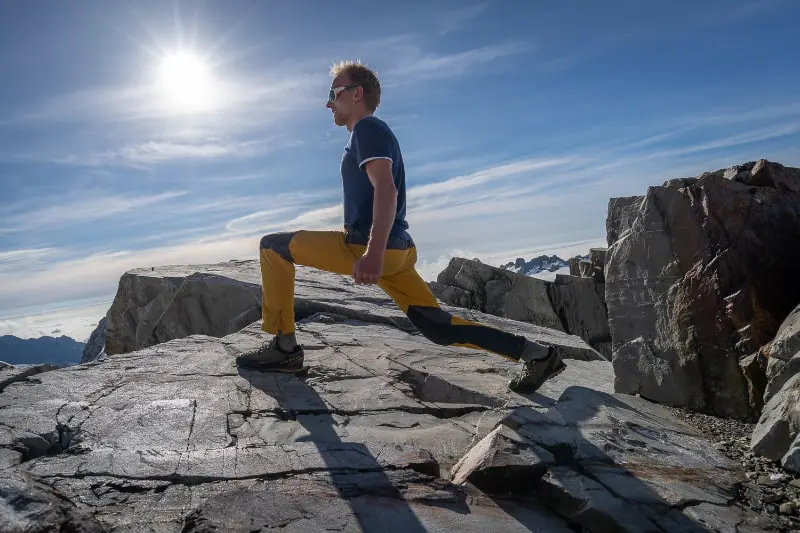
One of my favourites is this. Note: This workout may not be the best for you if you have poor knees. Having said that, see a specialist before overusing your knees if they are not well.
Exercises that work your lower limbs using your body weight are called lunges. They’re not what some people refer to as single-leg workouts. The muscles in both legs were engaged, and the lunges were executed correctly. The majority of the labor is done by the front leg, although the hind leg also contributes. The rear leg may also receive a lot of exercise, depending on your level of strength and flexibility.
Taking a step forward with one leg, stand normally. Bring the rear knee down to the floor.
(On hard terrain and rocks, exercise caution). Both legs should be bowed at the knee to their lowest position. Reposition to a standing position by pushing with your front foot. Repeat with the other leg switched. Try holding something heavy close to your chest if you find it to be too simple.
Is it too simple still? As you lunge, raise the object over your head with straight arms.
When you kneel or lunge, keep the heel of your front leg planted on the ground.
Put your feet shoulder-width apart as you take a step forward. Avoid attempting to adhere to a fictitious, tiny line.

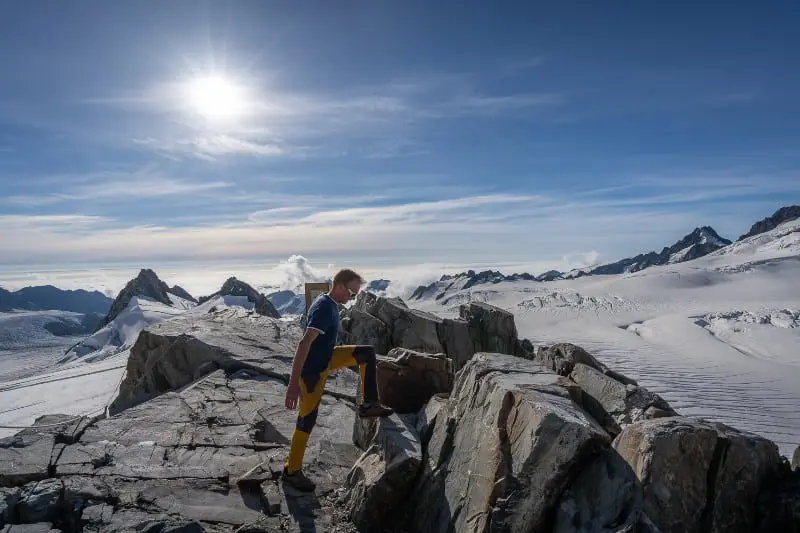
Box Step Up

One of my favorites is this. Be cautious: this may not be the best workout if you have shaky knees. That being said, get professional advice before applying any pressure to your knees if they are unhealthy.
Lower-body workouts using body weight include lunges. They are not single-leg workouts, despite what some people may say. Both legs’ muscles were contracting and the lunges were executed correctly. The majority of the hard lifting is done by the leading leg, with the trailing leg serving as a supporting leg. Your strength and flexibility will determine how much work you put into the supporting leg.
One leg should be raised as you stride forward in a natural posture. Lower the rear knee to the ground (be cautious on rocks and other harsh surfaces).
Both legs should be bowed at the knees to the maximum extent possible in this position.
Return to a standing position by pushing through the leading foot.
Repeat with a different leg.
Try holding something heavy near your chest if you find it to be too simple.
Is it too simple still? As you lunge, keep your arms straight and hold the object over your head.
When you lunge or kneel, make sure the heel of your front leg stays on the ground.
With your feet shoulder-width apart, take a step forward. Don’t try to stick to a fictitious, restrictive boundary.
Straight Leg Bear Crawl
It seems like someone tried to give this exercise a name, but instead of just calling it knee-to-chin, they thought of something catchier and more fashionable.
It’s similar to the detested burpee as a warm-up exercise. Climbing on mountainsides will quickly increase your heart rate. Furthermore, holding the peak of a push-up is an isometric strength exercise that works the shoulders and chest. That being stated, the core is the main emphasis of this exercise. To control the quick movement of your legs and prevent your body from tumbling to the ground, you need strong core muscles and coordination.
This exercise increases in intensity as you go through it more quickly. I promise you that if you continue doing this for 100 meters, your lungs will burn.
With your feet slightly wider than shoulder-width apart, bend forward and raise yourself using your hands on the floor.
Step forward with one arm about the length of a foot, then step forward again without extending the other leg.
Continue to the opposite side.
You can increase the speed as you get acclimated to it.
Mountain Climber
It seems that someone was trying to give this exercise a name, and instead of just naming it knee-to-chin, they came up with a more hip and catchy moniker.
It is comparable to the hated burpee as a warm-up activity. Mountain climbers will quickly raise your heart rate. Additionally, strengthening the chest and shoulders is an isometric strength exercise that comes from holding the top of a push-up. That being said, this workout focuses on the core. Strong core muscles and coordination are necessary to control your legs’ rapid movement while keeping your body from falling to the ground.
Assume the beginning pushup position.
Bring one knee quickly up to the chest and then quickly back down to the beginning position.
Return after bringing the opposite knee to the chest.
Again,
Easy to use but highly efficient.
A dynamic and effective full-body workout that works several muscle groups at once is the mountain climber. They are a great way to warm up, but they also perform wonders for your cardiovascular system by increasing heart rate and burning calories. The quick switch between bringing each knee to the chest works the leg muscles and hip flexors in addition to the core. Mountain climbers are a flexible workout that may be readily adjusted to meet different fitness levels and objectives.
Mountain Climber
The dowels used in gyms to help people relax their shoulders are a perfect substitute for walking or hiking poles. or, if one is available, a broom handle.
Dislocates are known? You won’t forget them, though.
With your arms spread roughly twice the width of your shoulders, hold your stick or pole in front of you.
Raise the pole high and bring your arms behind you without bending them. The object is to contact the pole off your butt without letting your arms droop or your shoulders become torn; exercise caution.
Quit if you have pain. This will be a painful workout, and you may find it difficult to fully extend the pole if you have tight shoulders. That’s alright. Practice daily until you reach your goal.
This is a somewhat simpler version of another excellent shoulder-opener exercise that you may perform. Hold your arms straight. Feel the strain in your upper back and shoulders as you press your head through your arms.
Shoulder Opener / Disclocates
The dowels used in gyms to help people relax their shoulders are a perfect substitute for walking or hiking poles. or, if one is available, a broom handle.
Dislocates are known? You won’t forget them, though.
With your arms spread roughly twice the width of your shoulders, hold your stick or pole in front of you.
Raise the pole high and bring your arms behind you without bending them. The object is to contact the pole off your butt without letting your arms droop or your shoulders become torn; exercise caution.
Stop if you are in pain. This exercise will be painful and you may not be able to move the pole over its whole range if you have tight shoulders. It’s alright. Until you can, keep practicing every day.
Here’s a somewhat simpler version of another excellent shoulder-opener exercise. Keep your arms straight. Feel your shoulders and upper back stretch as you push your head through your arms.
Squat (Air Squat)
The dowels used in gyms to help people relax their shoulders are a perfect substitute for walking or hiking poles. or, if one is available, a broom handle.
Dislocates are known? You won’t forget them, though.
With your arms spread roughly twice the width of your shoulders, hold your stick or pole in front of you.
Raise the pole high and bring your arms behind you without bending them. The object is to contact the pole off your butt without letting your arms droop or your shoulders become torn; exercise caution.
Stop if you are in pain. This exercise will be painful and you may not be able to move the pole over its whole range if you have tight shoulders. It’s alright. Until you can, keep practicing every day.
Here’s a somewhat simpler version of another excellent shoulder-opener exercise. Keep your arms straight. Feel your shoulders and upper back stretch as you push your head through your arms.
V-Hold or V-Up
For many people, this is an advanced move. Even super-fit climbers find these difficult. V-holds highlight core weaknesses. Starting from a lying position, engage your core (squeeze your abs, glutes, and quads) and bring your legs to 45 degrees and your arms and torso to 45 degrees. Your body should form a V. Now the hard bit: hold it for 10 seconds. Relax, take a 20-second break, and then repeat. 5 rounds should be enough for beginners. When you can do 10 seconds easily, extend the time to 20.
As you progress in your strength and fitness journey, extending the duration of your V-holds can provide an additional challenge and further enhance your core strength. Once you can comfortably hold the V-hold for 10 seconds, consider gradually increasing the duration to 20 seconds. Focus on maintaining proper form throughout the entire hold, keeping your legs and torso at a 45-degree angle, and engaging your core by squeezing your abs, glutes, and quads.
The Plank
A more straightforward exercise than the V-hold, the plank targets the stabilizing muscles of the core, particularly the erector spinal and transverse abdominis. The muscles of your legs and back will also be worked.
Although it’s a straightforward movement, be careful not to round or arch your back. Just as with all of these workouts, you are less likely to misalign your back and sustain an injury while your core is working.
On the ground, begin to lie prone. Elevate yourself to your toes and elbows.
Maintain a straight line from your head to your ankles. The position of your head and neck should be neutral.
Hold when activating the core. Your abdomen should start to burn after 10 to 20 seconds. That’s excellent. Give it a 30-second try.
Every few days, work on this.
Tri-dips
Pressing against things to move their bodies across space is a common practice for climbers. Our tricep muscles are used when we press or push with our arms. Though not especially large, these muscles are rather strong. Additionally, they are frequently tight in non-stretching folks.
A great workout to activate your triceps and test their complete range of motion while under weight is the tricep dip.
Locate a platform, ledge, or rock that is around hip height.
Turning your back to the platform, put your hands on the ground behind you.
Bend at the arms and hips to lower your torso while keeping your legs extended in front of you.
Press through your arms to return to the top position at the bottom of the action. It might be difficult if this is something you have never done before.
—
These are two-fold workouts for the core. They assist in warming up and mobilizing your body in addition to working the crucial but sometimes ignored muscles in your body.
Practicing these routines during any downtime in the mountains is highly recommended. Continue honing your skills, and you’ll experience years of injury-free mountain travel and a pain-free climbing season.
Source:
First Light Guiding: ‘Core Training for Climbing.’ https://firstlightguiding.com/core-training-for-climbing/


